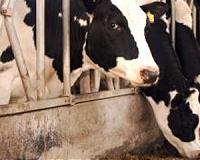 |
Washington (AFP) Jan 18, 2011 A global population explosion combined with the steady effects of climate change are forecast to create a worldwide food shortage in the next 10 years, but the news isn't all bad for some countries. The United States, China, Ethiopia and parts of northern Europe are among the select few expected to be able to grow more crops as a result of changes in temperature and rainfall, according to a study released Tuesday. However, those gains will not be enough to stave off an increase in world starvation and price spikes for food as a result of a shortfall in three of the four main cereal crops, said the report by the Universal Ecological Fund, a non-profit group. The forecast is based on UN figures about climate change released in 2007, and projects the impact of temperature changes that will leave the planet at least 2.4 degrees Celsius (4.3 Fahrenheit) warmer by 2020. While there are more recent analyses that make slight allowances for how the Earth may adjust itself, researchers used the 2007 Intergovernmental Panel on Climate Change (IPCC) Fourth Assessment Report, combined with "the business-as-usual path the world is currently following," said lead author Liliana Hisas. The analysis describes a scenario in which a population boom packs the world with an additional 890 million people by 2020, for a total of 7.8 billion. Changes in agriculture wrought by swings in rain and temperature then forge across-the-board deficits in wheat, rice and maize, meaning there will not be enough to feed all those extra mouths. The result will be more prevalent hunger -- one in five people going hungry, up from the current rate of one in seven -- and food price spikes of up to 20 percent, according to the study. "At least every other newborn in Africa; one in every four newborns in Asia; and one in every seven newborns in Latin America and the Caribbean would be sentenced to undernourishment and malnutrition," it said. On the whole, Africa is expected to be the hardest hit. Due to hotter, drier temperatures, nearly two-thirds of arable land on the continent could be lost by 2025, and maize growing could die out completely in some areas, according to the study. It said grape and olive growing in Mediterranean countries like Italy, Spain and France will suffer due to mounting dryness, as will the vineyards of California -- a 3.9-billion-dollar industry. For the United States, a major global grain producer, wheat crops are forecast to grow five to 20 percent, while corn crops could falter slightly. Northern Europe could see wheat yields climb between three and four percent. Meanwhile, the vast continent of Asia will see drastically different impacts in crop growth and rainfall. India, the second largest world producer of rice and wheat, could see yields fall 30 percent, the study said. But not so for China, the world's biggest producer of wheat and rice, which is expected to boost yields up to 20 percent. The effects of climate change are expected to be harsher for India because of its tropical climate, as opposed to China, which lies in the temperate zone. Growers in Bangladesh and Pakistan could also expect to see declines. "Currently, 80 percent of global agriculture depends on rain," said Hisas. Ethiopia was singled out in Africa as a country that could benefit because higher temperatures could combine with rainfall changes to boost the growth of its key crop, coffee. Ethiopia is the world's sixth largest coffee producer. The United States and China are among those expected to grow more of every main cereal group. Soybean production is forecast to result in a five percent surplus, but the other three will see deficits across the world due to rising demand: a 14 percent shortfall in wheat, 11 percent for rice and nine percent for maize. Latin America will see an overall decline in cereal yield of 2.5 to five percent by 2020. Australia's forecast was mixed: significant yield drops in the southwest but moderate increases in the northeast. The study urged nations to adjust crop timing and move livestock to areas where water availability is improved. Some dietary habits may have to shift, such as consuming more potatoes, beans and lentils instead of cereal grains and animal proteins. But the primary change it recommended was reducing harmful pollutants in the atmosphere, or greenhouse gases. "Reducing GHG emissions is the first and most important step. Efforts so far have been numerous, but unsuccessful," the study said.
Share This Article With Planet Earth
Related Links Farming Today - Suppliers and Technology
 Choosing Organic Milk Could Offset Effects Of Climate Change
Choosing Organic Milk Could Offset Effects Of Climate ChangeNewcastle, UK (SPX) Jan 19, 2011 Wetter, cooler summers can have a detrimental effect on the milk we drink, according to new research published by Newcastle University. Researchers found milk collected during a particularly poor UK summer and the following winter had significantly higher saturated fat content and far less beneficial fatty acids than in a more 'normal' year. But they also discovered that switching to ... read more |
|
| The content herein, unless otherwise known to be public domain, are Copyright 1995-2010 - SpaceDaily. AFP and UPI Wire Stories are copyright Agence France-Presse and United Press International. ESA Portal Reports are copyright European Space Agency. All NASA sourced material is public domain. Additional copyrights may apply in whole or part to other bona fide parties. Advertising does not imply endorsement,agreement or approval of any opinions, statements or information provided by SpaceDaily on any Web page published or hosted by SpaceDaily. Privacy Statement |